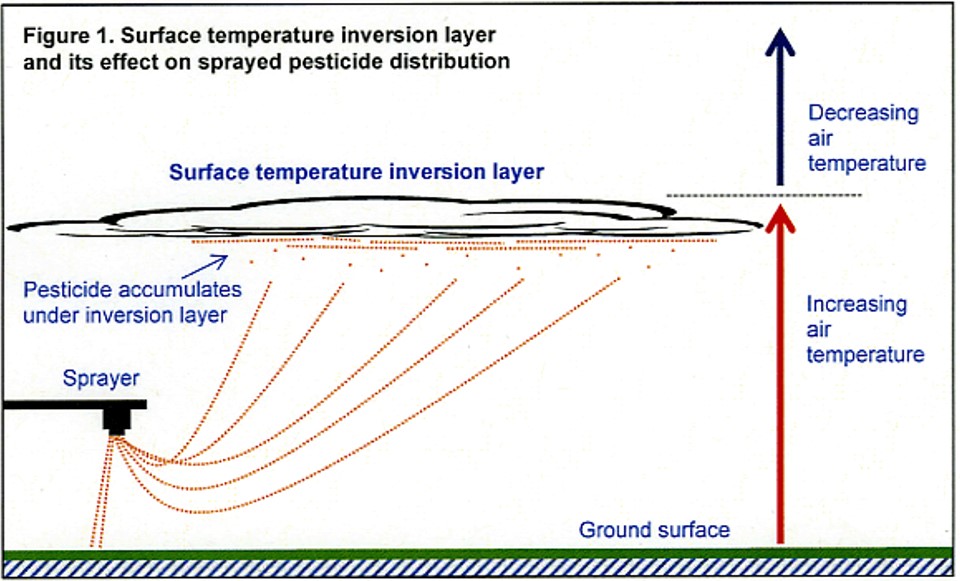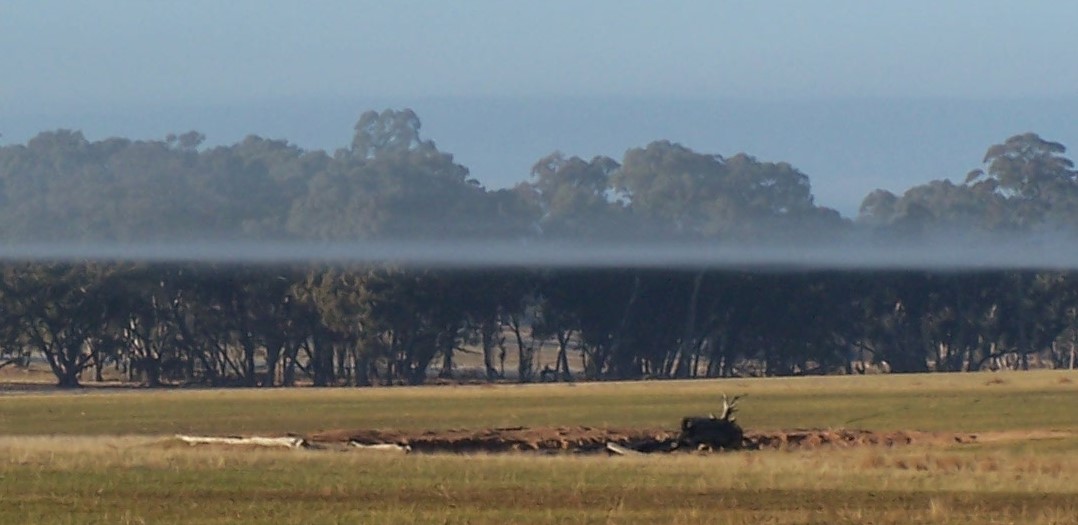Recognising surface temperature inversions
Understanding weather patterns like surface temperature inversions can help spray applicators avoid spray drift.
What is surface temperature inversion
Surface temperature inversions occur when air temperature increases with height from the ground surface. This is the opposite of what normally happens (so the temperature profile is ‘inverted’). This results in a layer of cool, still air being trapped below warmer air. The height above the ground where the temperature stops increasing and begins to decrease is the top of the inversion layer.
If pesticides are sprayed during an inversion, fine droplets of the chemical can be concentrated in the cool layer near the ground and isolated from the surrounding weather conditions (Figure 1). The direction and distance the droplets will then move becomes unpredictable and the chemical may be transported away from the target area.

Many factors affect where pesticide droplets land, including:
- landscape
- slope
- surface breezes and the timing of the inversion breaking up.
It is unsafe to spray when conditions favour surface temperature inversions. This is because of the risk of spray drift.
Recognising a surface temperature inversion
Inversions usually happen between sunset and 2 hours after sunrise. Any sprays applied during this period may be impacted.
Some inversions are easy to see (as in the photo on this page), but others may not show up even in daylight. This makes it hard for chemical users to spot them and change their spraying schedule.
Measuring an inversion accurately on the farm can be tough. However, local conditions can indicate if an inversion is present.
A surface temperature inversion is likely to be present if:
- mist, fog, dew or a frost have occurred
- smoke or dust hangs in the air and moves sideways, just above the surface
- cumulus clouds that have built up during the day collapse towards evening
- there is a large difference between the observed maximum and overnight minimum temperatures
- wind speed is constantly less than 11 km/h in the evening and overnight
- cool, off-slope breezes develop during the evening or overnight
- distant sounds become easier to hear
- aromas are more distinct during the evening than during the day.
Smoke pots and smoking devices on a sprayer’s exhaust can show if the air is stable or if the wind is calmer. These signs suggest that a surface temperature inversion may have formed. Other tools like on-board weather stations or flags can show if the wind speed has dropped. Spraying should cease if the signs point to an inversion forming.

How long will a surface temperature inversion persist?
Surface temperature inversions usually fade around 2 hours after sunrise. This happens if the air temperature rises over 5 °C above the overnight low. Also, the wind speed must stay above 7 km/h for more than 45 minutes after sunrise.
Before spraying after an overnight inversion, check that the conditions listed above are gone.
More resources
- Buffer zones and vegetative barriers — Buffer zones and vegetative barriers are valuable tools that can be used to reduce the potential for spray drift when applying agricultural chemicals.
- Living in harmony pesticides and bees — Information on managing risks associated with agricultural spraying near apiary sites.
- Spray drift restraints and mandatory buffer zones — This page explains some of the operating principles in relation to spray drift risk such as how to correctly apply mandatory buffer zone labels.
- Visual Guide to estimating wind speed — This guide is not intended as a substitute for electronic hand held weather meters, which are available from spray equipment suppliers.
- Volatile vapour drift risk — Learn about the risks associated with volatile vapour production by ester formulations of phenoxy herbicides.